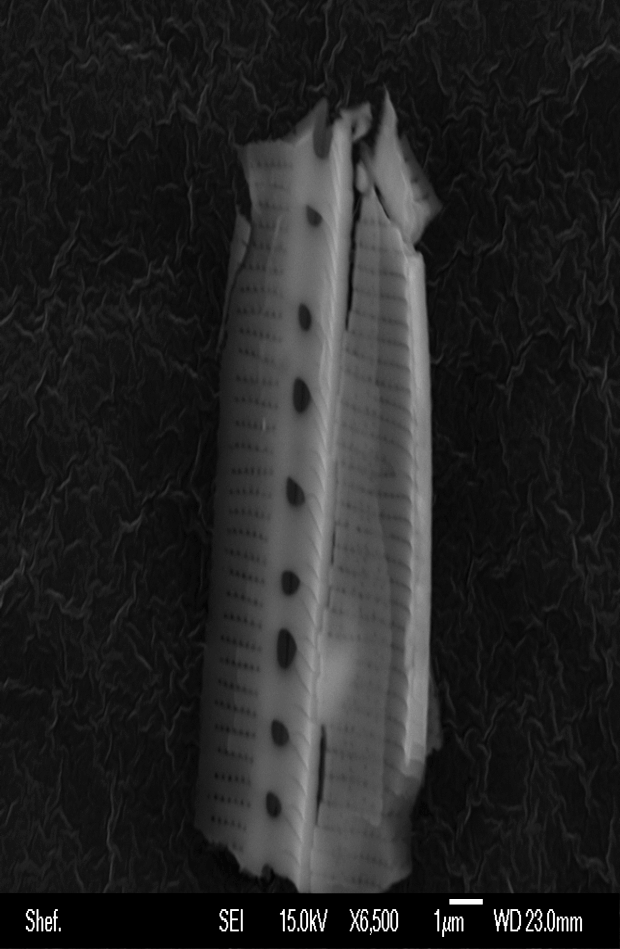British Scientists Claim ET Life May Have Been Found in the Stratosphere
A research team working with the University of Sheffield claims they may have found extraterrestrial life in the stratosphere at approximate altitudes between 25-27 KM. The results are found in the Journal of Cosmology http://journalofcosmology.com/JOC22/milton_diatom.pdf
Milton Wainwright et al analyzed samples taken over northern England by a stratospheric balloon on July 31, 2013. Their article “Isolation of a Diatom Frustule Fragment from the Lower Stratosphere (22-27Km)-Evidence for a Cosmic Origin” includes photographs of the remains of what may be extraterrestrial microorganisms. Because Earth-based diatom-size organisms do not survive for a long time at these heights the scientists give as their probable origin a comet.
A “frustule” is the hard shell or cell wall of “diatoms” and they are normally composed of silica. “Diatoms” are unicellular organisms normally representing a form of phytoplankton. Phytoplankton are wondering (autotrophic), photosynthesizing micro organisms typically found in the oceans. The balloon had a video camera, an electron microscope and a collecting stub designed to avoid contamination. What would a frustule be doing in the stratosphere at about 25 KM in altitude? The research team used an aseptic electron microscope onboard the balloon and claims that it is the first time an isolated diatom frustule has been obtained from the stratosphere. Moreover, they report that the size and mass of the specimen were especially significant. The sampling was conducted during the Perseid meteor shower. However, a comet origin is more specifically suggested.
No known Earth-based source at the time of the sampling (as volcanic eruptions may have been) would have sent a diatom to the stratosphere so the possibility of an extraterrestrial origin is given. The team of scientists (also including Christopher E. Rose, Alexander J. Baker, Briston, K.J and N. Chandra Wickramasinghe, Department of Molecular Biology and Biotechnology, Leonardo Centre for Tribilogy, Department of Mechanical Engineering, Department of Materials Science and Engineering, University of Sheffield, UK; and Buckingham Centre for Astrobiology, University of Buckingham, UK) is trying to determine whether the diatom frustule corresponds to a known earth species but they are quite serious about the possibility of it being of extraterrestrial origin.
Commentary: Even the scientific finding of an extraterrestrial diatom fragment would be a significant step toward the acceptance of extraterrestrial life. This acceptance would contribute to a more open-minded attitude on the current scientific and exopolitical evidence that self-aware, intelligent, extraterrestrial life is already found here among us.
Scanning Electron Microscope image of a DIATOM FRUSTULE found in the stratosphere
exobiology, extraterrestrial life, extraterrestrial microbes, Panspermia, scientific discoveries
